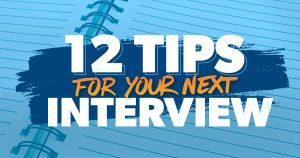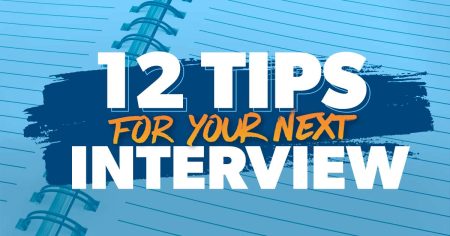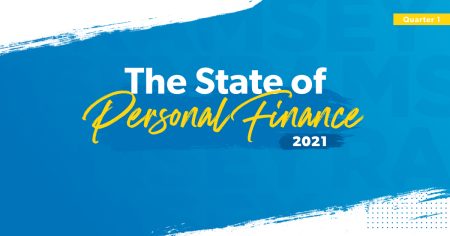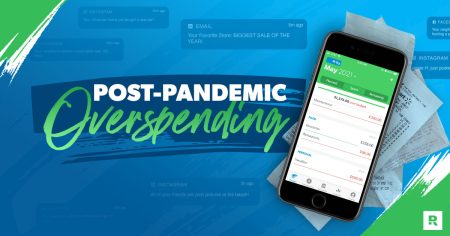Getting car insurance is a no-brainer. In fact, the law says you’ve got to have it. (Unless you live in Virginia or New Hampshire, that is.) But figuring out how to get car insurance? Yeah, that takes a little more brain power. From deciding on where you’ll get your car insurance, to what type of coverage you need, and then comparing quotes—well, it’s a headache. Fortunately, we’re going to break down every step so you know exactly how to get car insurance. No aspirin required!
You’re just five simple steps away from getting car insurance. Here’s what that looks like:
- Gather all your personal and auto-related information.
- Determine what kind of coverage you need.
- Choose how to shop for car insurance.
- Compare companies and prices.
- Pay for your new policy and cancel your old one.
1. Gather all your personal and vehicle-related information.
Before you do anything else, round up the information every car insurance company will request before they can quote you a rate. Here’s what you’ll need:
Personal Information
Vehicle-Related Information
- Vehicle Identification Number (VIN)
- Year, make, model, specs, and any customizations
- Name of registered owner
- Address where the vehicle is registered
- Current mileage and estimated annual mileage
- Date of purchase
- Previous or current insurance provider, coverage details, and policy expiration date
- What you use the vehicle for (in most cases, this will be personal use as opposed to business)
Once you have all this information handy, next up is figuring out what kind of coverage you need.
2. Determine what kind of coverage you need.
Determining what kind of coverage you need is usually the trickiest part of the process. Keep in mind that there are different types of coverage, and different levels of each type. And be aware that some policies require you to select a level or amount of coverage for certain coverage types. For example, you can’t just purchase liability coverage and assume you’re covered for whatever happens in that department—you’ll need to specify coverage amounts for both bodily injury and property liability.
Most states require a minimum level of coverage for all drivers—this keeps you and other drivers somewhat protected—and then from there it’s up to you based on what you can afford (unless you have a car loan or lease, and then you’ll have a few other requirements too). And don’t assume your state minimums on coverage will be enough to replace your totaled vehicle when the other driver’s at fault. In some cases, settling for the cheapest coverage isn’t always the smartest choice.
Let’s look at the different types of auto insurance coverage so you can get an idea of what’s available.
The Basic Auto Coverages
|
Coverage Type |
How Does It Work? |
|
Liability Coverage |
Liability coverage is about as standard as it gets, and most every state requires it. This type of coverage protects you if you cause an accident, damage property, or injure someone with your vehicle. Your insurance kicks in to cover the costs up to the amount you select. (If you own a car with a rebuilt or R title, this may be the only coverage you can get.) Agents sometimes classify liability as a third-party protection because it benefits someone else (not the policyholder) when an accident happens, as opposed to first-party protection like comp and collision. |
|
Comprehensive Coverage |
Comprehensive auto insurance is another standard form of coverage. In fact, if you lease or finance your car, your lender may even require you to have it. Comprehensive coverage is basically for anything that might happen to your car when you’re not driving it: extreme weather, flood, fire, falling objects, vandalism and theft. Strangely enough, this also covers damage to your car if you hit an animal while driving. You’ll be able to select a deductible to control the cost of this coverage. |
|
Collision Coverage |
If your vehicle is damaged in an accident, regardless of who is at fault, collision coverage covers the cost of repairs. This is another coverage with a deductible. Collision coverage may seem like overkill—after all, if the other driver caused the crash, they’ll have insurance to cover the cost, right? Not always. Sometimes that other driver is uninsured. What’s more, you could be involved in a hit-and-run and not know who did the damage. Then there’s subrogation—a fancy word for “No, you pay for this!”—and without collision coverage, you’ll be caught holding the repair bill in the meantime. With collision coverage, you only have to pay your deductible. |
|
Uninsured/Underinsured Motorist Coverage |
Unfortunately, just because the law requires car insurance doesn’t mean everyone on the road has it—or has enough. Uninsured and underinsured motorist coverage protect you if you’re in an accident with someone who doesn’t have insurance or doesn’t have enough insurance to cover damages done to you. |
|
Gap Insurance |
The best kind of car is a paid-for car. But maybe you’re stuck in a lease or a loan while you work to pay down debt. If that’s the case, you can be up a creek if your car is totaled and you’re stuck making payments on a car you don’t even have anymore. Gap insurance is designed to cover the gap between the car’s actual cash value (ACV), including depreciation, and what you still owe. |
|
Personal Injury Protection |
More can be affected in an accident than just vehicles. There’s you and your passengers to consider too. Personal injury protection ensures that medical and rehabilitation expenses are covered for you and your passengers as well as any lost wages. Keep in mind, in some states, this one’s mandatory. You might also hear of medical payments coverage, a related insurance type that offers lower limits (and less coverage) at a more affordable price than PIP. |
So, once you’ve figured out what kind of coverage you need, it’s time to compare car insurance quotes. Make sure to use the same limits and deductibles (how much you owe first before insurance kicks in) for each type of coverage you’re considering. But how do you know what to get? And can you get great coverage without breaking the bank? That’s where step three comes in: choosing how to get car insurance.
Don’t let car insurance costs get you down! Download our checklist for easy ways to save.
3. Choose how to shop for car insurance.
Now that you know what you need to get a quote and what the possibilities are for coverage, you need to decide how to get car insurance. You’ve got three options. You can get insurance:
1. Directly from an insurer
This avenue gets you insured quickly but is usually best for folks who feel comfortable with the car insurance–buying process. Because you’re going directly through the insurer’s website or through a third-party site that provides multiple quotes from different companies, you’re basically giving up personalized customer service. And when it comes to car insurance, that’s a pretty big deal.
Think about it: If you’ve just been in a serious car accident, do you want to call Doug, your neighborhood car insurance agent, or text with a chatbot to discuss what you need to do next? Without an agent, you’re potentially putting your money and vehicle in the hands of someone who isn’t deeply invested in helping you. Something else to consider? When you request quotes directly from insurers, they’re going to immediately start calling, emailing and texting you. Multiply that by 10 insurers and you might end up throwing your phone out the window!
|
Pros |
Cons |
|
Quick coverage |
Lacks customer service |
|
Can work well for customers who already have experience buying insurance |
Could be leaving yourself open to a purchase that doesn’t truly serve your needs |
|
You run the risk of getting flooded with messages from multiple insurers |
2. From a captive agent
The name is a little scary, but we promise you won’t be held ransom while buying car insurance! Remember Doug from above? Doug is a captive agent. That means he works for an insurance company and sells policies to customers like you who are wondering how to get car insurance. He remains your point of contact whenever you need to file a claim or change your policy. If you have multiple or complicated policies, you have a dedicated person to help you navigate them. And most of all, a captive agent is going to walk you through all the coverage options and help you to understand what’s best for your vehicle and budget.
The downside of a captive agent? They work for one company, so as far as quotes go, what you see is what you get. They’re not able or going to show you their competitors’ rates. Plus, most agents work on commission, so make sure you’re not buying something you don’t need.
|
Pros |
Cons |
|
A dedicated person to help you with claims or policy adjustments |
They work for only one company |
|
Can help you navigate multiple policies |
You won’t see any competitors’ rates |
|
Will walk you through all the coverage options |
They work on commission, so be sure what they’re selling is something you need |
3. From an independent agent or broker
Finally, you’ve got independent agents or brokers. These folks will do all the work you’d be doing on your own if you bought directly from an insurer. They’re the go-between that saves you the hassle of shopping around. Plus, they can help you understand how much coverage you need with the budget you have. Independent agents contract with multiple companies to get you the best rates. Independent agents represent the different insurance companies they work with while independent brokers represent you.
A drawback to independent agents and brokers is that they don’t represent the full range of possible coverage. You’ll still get access to multiple quotes but may not get quotes from some of the bigger names in insurance that have captive agents on staff. Both agents and brokers work on commission, so they’re motivated to sell you something. Just make sure it’s something you actually need.
If you go with an independent insurance agent (and we think you should), we have some folks in that line of work you should meet: our RamseyTrusted insurance pros. They’ve helped tons of people find coverage to meet their needs and budget. How do they do it? It’s called independence. Because they aren’t dedicated to one insurance company, they can shop around to get you the best rate.
“My husband and I just shopped our home, auto and umbrella insurance[s] with a (Ramsey)Trusted pro,” Katie B. explained in the Ramsey Baby Steps Facebook Community. “Our agent was absolutely amazing and gave us such great advice, we are saving hundreds! [She’s] also handling all of the setup of the new policy and cancellation of the old policies.”
Saving on car insurance and your other coverages is easy, and having a RamseyTrusted pro help you take care of the switcheroos and setup is a huge plus.
Buying Car Insurance Locally
Independent agents and brokers also have local offices, unlike the big guys at the 800 numbers, so they’re going to be very familiar with your local and state insurance laws.
|
Pros |
Cons |
|
Represents you when talking with the insurance companies |
You may not get quotes from some of the bigger insurance companies |
|
Shops options for you from multiple companies to get you the best rates |
They work on commission, so be sure what they’re selling is something you need |
|
Helps you understand your coverage needs |
4. Compare companies and prices.
You’re in the homestretch! It’s time to gather all your quotes. Don’t forget to compare apples to apples—that means you need to get quotes for the same coverage limits and deductibles for each option.
Cheaper is not always better, and customer service and satisfaction can’t be overlooked. Remember, we get insurance to cover us if trouble comes up. So, who do you want on your team when there’s trouble?
Differences in Rates Among Insurers
An independent agent is on your side. That means they’re in the best position to find the best priced coverage among a range of insurers that’s tailored for what you need (and nothing you don’t). They have experience working with insurance companies and can recommend the best policy for the carriers they have the best experience with.
5. Pay for your policy and cancel your old one.
All that’s left to do is pay for your new policy and cancel your old one. The insurance company you go with will let you know their payment options. This next part is important. Don’t cancel your old or existing policy until the new one is active. Accidents do happen, and you don’t want to be without coverage for even one second.
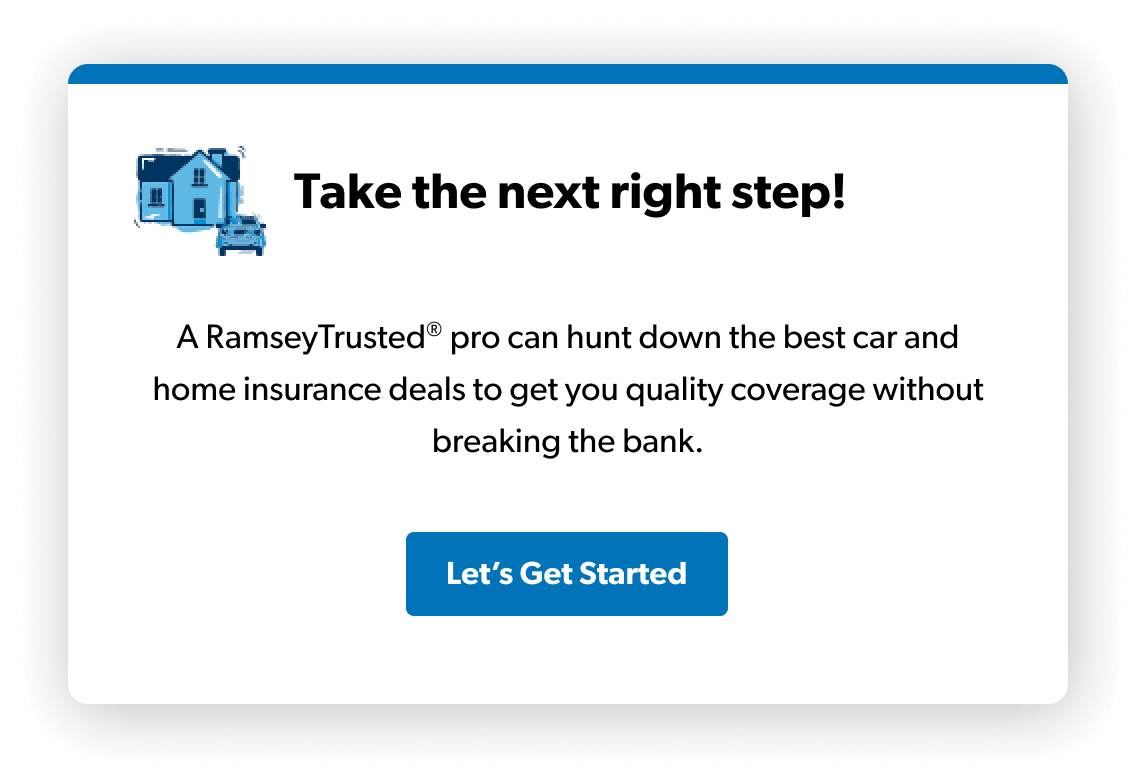
What to Look for When Buying Car Insurance
Car Insurance Savings
Here is the simplest, easiest thing you can do to get cheaper car insurance. You ready? Here it is: Ask for a discount. That’s right, call up your insurance agent or company and say, “What discounts am I eligible for?”
Clean driving record? Discount. Bundle a homeowners or renters insurance policy? Discount. Multiple car insurance policies? Discount. An insurance company’s job is to keep your policy with them. They’ll want to help you look for reasons to stay.
Want even cheaper car insurance? Think about the last time you shopped for car insurance rates. If it’s been a year or more, it’s time to take a spin through the steps we just outlined above. Shopping for quotes is a very effective way to get cheaper car insurance. Maybe you’ve got a new car, a paid-off car, an old beat-up car that would be totaled if you bumped into a mailbox—any changes to your car situation mean it’s a good time to shop around. Or, at the very least, it’s a good time to check in with your current provider to see about making some coverage edits.
When you’re shopping for auto coverage, the goal isn’t to get the cheapest insurance possible. The goal is to get the best coverage for your budget. Getting proper protection for yourself and your property is just as important as being thrifty—but there are some ways to save.
Personalized Auto Coverages
Some coverage types are universal for all drivers. But don’t forget the policies and laws that apply to your specific area or situation. Car insurance is not a one-size-fits-all kind of protection.
Liability coverage is legally required for just about everyone on the road. It covers damages or injuries to other people or their stuff when you’re found at fault in an accident. You’ll for sure need this kind of coverage. But keep in mind . . .there are other policy types that aren’t strictly required, but are still a great idea to consider. Depending on your state’s laws, you might be legally required to have one or more of the coverage types above and beyond liability. For example, 12 U.S. states currently require personal injury protection (which we described in detail a little earlier). And even if your state doesn’t require it, it can be a great extra layer of protection for you.
Mistakes to Avoid When Buying Car Insurance
Don’t freak out. Buying car insurance doesn’t have to be expensive, scary or stressful at all! But we do want to mention a couple of common pitfalls you should avoid when you’re shopping.
New Driver Car Insurance Cost
New drivers tend to pay more for their car insurance. That’s understandable since they don’t have much of a driving record yet. But even if you’re a rookie, don’t assume you have to go broke to get coverage. There are things you can do that could get you a discount:
- Completing a driver’s ed course
- Getting good grades (because academic responsibility ties with good driving)
- Driving a used car (they’re cheaper to insure)
Buying at the Wrong Time
How can there be a wrong time to get an essential protection like car insurance? You’d be surprised! We don’t recommend shopping rates right after:
- You’ve had an accident
- You’ve been cited for a traffic violation
That kind of thing will definitely bring higher prices for a while.
On the other hand, there are certain life events that make it easier to get a better car insurance rate, like getting married. Are we serious? It’s true! Insurance companies now view you and your spouse as more stable and responsible, and they’ll probably give both of you lovebirds a break on your premiums.
Still can’t get car insurance?
Are you still having trouble getting insured? Whether it’s those youthful fender-benders (hey, we’ve all been there) or your oh-so-stealable Kia, sometimes finding the right auto policy is a challenge.
Don’t give up! Talk to one of our RamseyTrusted auto insurance pros to see what your options are. No matter how many no’s you’ve heard, you might be able to get yourself car insurance by bundling it with other coverages. (And you could save money while you’re at it!)
Get the Right Car Insurance Policy for You
Getting good car insurance can be a hassle—and that’s before you throw in worries about your agent or insurance company being reliable. But it shouldn’t be that way! Whether you need car insurance for the first time or just want to shop new rates, you want to work with someone you can trust.
- If you want to know more about certain kinds of insurance, here are a few of our deeper dives on coverage types: liability, collision and comprehensive.
- Once you’re ready to buy, gather all the information you’ll need to apply for a policy, including the VIN numbers for your vehicles.
- Connect with a RamseyTrusted pro who can look at your unique situation and find you the best protection at the right price. They would love to help you find the best policy for your needs. We don’t do hassles and headaches, and neither do they. Get the right plan for your vehicle and budget so you can drive stress-free!
Frequently Asked Questions
-
How long does it take to get car insurance?
-
You need one good solid hour to get car insurance (even less if you buy directly from an insurer). With a little prep—getting all your preliminary info ready, having a rough idea of what coverage you need, and determining how you want to go about getting car insurance—you’ll be on your way as soon as you hop online or get on the phone with an agent, broker or insurance company. Be sure to ask whoever you’re buying from when your policy will take effect. In most cases, you can expect it to go into effect as soon as you complete the purchase.
-
How long do you have to get insurance after buying a used car?
-
Each state will have different rules around how long you have to get insurance after buying a car. If you’re buying a used car from a dealership, you’ll have to show proof of insurance before you can drive that puppy off the lot. The dealership would be in major hot water if they let you drive away uninsured in one of their vehicles.
But if you’re doing a private sale, the owner of the vehicle is under no obligation to ensure you have car insurance. In that case, you want to get your policy set up ASAP. If you already have car insurance, that policy will usually cover your new used car for a couple of days or weeks. But don’t wait around to get this taken care of.
If you don’t already have a car insurance policy in place, you’ll want to work through the steps we outlined as soon as you know what you want to buy. Then get a policy set up before a private seller hands over the title to your new used car. Whatever you do, don’t drive around uninsured! It’s not worth the risk. Plus, knowing what the insurance costs for a particular car may help you make up your mind if you are on the fence.
-
Why do you need car insurance?
-
The two primary reasons to get car insurance are to protect yourself financially and to avoid legal problems. Driving around without car insurance is illegal, dangerous and stupid—because no matter how careful you are, car accidents happen to everyone eventually. On the other hand, getting the right kinds and amount of car insurance in place is smart, safe and a whole lot cheaper than trying to pay for auto accidents out of your own pocket.
-
Can you get car insurance instantly?
-
You can get car insurance instantly. But before you go that route, stop and think. Instant coverage might not be your best option for savings or for your true insurance needs. Of course, it’s never wise to drive without any coverage—but don’t let your need for speed fool you into a bad purchase. It’s smarter to work with a RamseyTrusted auto insurance pro. They can shop for you, offer several options, and give you great advice about exactly what policy will serve you best.
-
How do I get car insurance for the first time?
-
When you get car insurance for the first time, you have three basic options. You can get it directly from an insurer, you can go through a captive agent (who sells insurance for only one company), or you can work with an independent agent (who can shop multiple companies). We always recommend working with an independent agent because of the flexibility and competitive pricing available.
-
Is it good to shop around for car insurance?
-
Well, it can be good to shop around for car insurance. After all, you can’t assume the first rate you find will be the best out there. At the same time, price isn’t the only factor when it comes to insurance. You also want to be sure you have all the coverage you need—both in terms of types and amounts—to protect yourself completely. The easiest way to get it all taken care of is to let a RamseyTrusted pro do the shopping for you. These pros are independent agents, so they have access to several insurers to compare and contrast coverages and rates. They’ll consider your whole situation and help you find the best and most affordable rate on car insurance—and if bundling makes sense, they can help you out with other coverages as well.
-
Can I buy insurance without a car?
-
You can buy car insurance without a car. This coverage type is called non-owner car insurance. This can be a useful kind of coverage if you plan to drive another vehicle but have no need to buy a car of your own. Most car insurance policies cover any driver that the owner of the policy allows to drive the car. (Obviously that doesn’t include thieves.) So if you let your friend or your parent drive your car, it’s usually covered without them being specifically added to the policy.
-
Can I buy car insurance without a driver’s license?
-
It is possible to buy car insurance without a driver’s license. A typical example of someone without a license who wants to buy car insurance would be a parent who doesn’t drive, but wants to buy coverage for a child driver. Some companies will sell you a policy for Junior as the primary driver—if you provide the company with proof that he’s licensed. But it may be more difficult or expensive to get this kind of policy. In fact, some insurers don’t sell policies to unlicensed drivers at all.
Read the full article here

